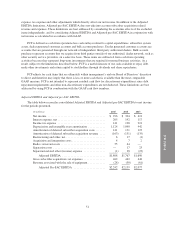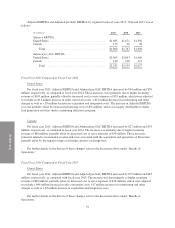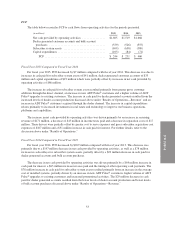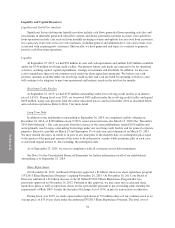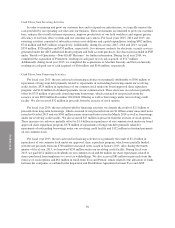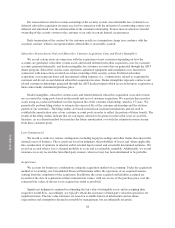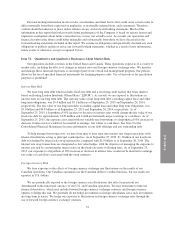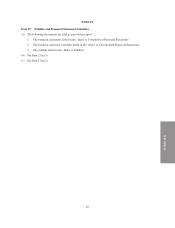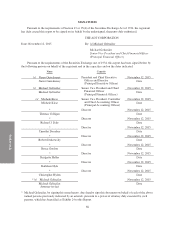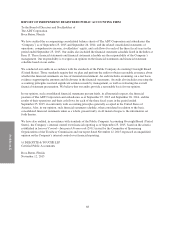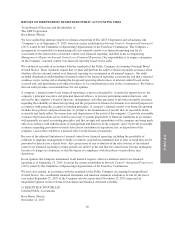ADT 2015 Annual Report Download - page 134
Download and view the complete annual report
Please find page 134 of the 2015 ADT annual report below. You can navigate through the pages in the report by either clicking on the pages listed below, or by using the keyword search tool below to find specific information within the annual report.
FORM 10-K
U.S. entities and a standalone basis for Canadian entities. In certain instances, tax losses or credits generated by
Tyco’s other businesses continue to be available to us in periods after the Separation.
In determining taxable income for our Consolidated Financial Statements, we must make certain estimates
and judgments. These estimates and judgments affect the calculation of certain tax liabilities and the
determination of the recoverability of certain of the deferred tax assets, which arise from temporary differences
between the tax and financial statement recognition of revenue and expense.
In evaluating our ability to recover our deferred tax assets, we consider all available positive and negative
evidence including our past operating results, the existence of cumulative losses in the most recent years and our
forecast of future taxable income. In estimating future taxable income, we develop assumptions including the
amount of future pre-tax operating income, the reversal of temporary differences and the implementation of
feasible and prudent tax planning strategies. These assumptions require significant judgment about the forecasts
of future taxable income and are consistent with the plans and estimates we are using to manage our underlying
businesses.
We do not have any significant valuation allowances against our net deferred tax assets.
Changes in tax laws and rates could also affect recorded deferred tax assets and liabilities in the future.
Management records the effect of a tax rate or law change on our deferred tax assets and liabilities in the period
of enactment. Future tax rate or law changes could have a material effect on our results of operations, financial
condition or cash flows.
In addition, the calculation of our tax liabilities involves dealing with uncertainties in the application of
complex tax regulations in the United States and Canada. We recognize potential liabilities and record tax
liabilities for anticipated tax audit issues in the U.S. and other tax jurisdictions based on estimates of whether,
and the extent to which, additional taxes will be due in accordance with the authoritative guidance regarding the
accounting for uncertain tax positions. These tax liabilities are reflected net of related tax loss carryforwards. We
adjust these reserves in light of changing facts and circumstances; however, due to the complexity of some of
these uncertainties, the ultimate resolution may result in a payment that is materially different from our current
estimate of the tax liabilities. If our estimate of tax liabilities proves to be less than the ultimate assessment, an
additional charge to expense would result. If payment of these amounts ultimately proves to be less than the
recorded amounts, the reversal of the liabilities would result in tax benefits being recognized in the period when
we determine the liabilities are no longer necessary.
Accounting Pronouncements
See Note 1 to the Consolidated Financial Statements for information about recent accounting
pronouncements.
Cautionary Statement Regarding Forward-Looking Statements
This report contains certain information that may constitute “forward-looking statements” within the
meaning of the U.S. Private Securities Litigation Reform Act of 1995. While we have specifically identified
certain information as being forward-looking in the context of its presentation, we caution you that all statements
contained in this report that are not clearly historical in nature, including statements regarding business strategies,
market potential, future financial performance, the effects of the separation of ADT from Tyco and other matters,
are forward-looking. Without limiting the generality of the preceding sentence, any time we use the words
“anticipate,” “estimate,” “expect,” “project,” “intend,” “plan,” “believe” and similar expressions, we intend to
clearly express that the information deals with possible future events and is forward-looking in nature. However,
the absence of these words or similar expressions does not mean that a statement is not forward-looking.
60



